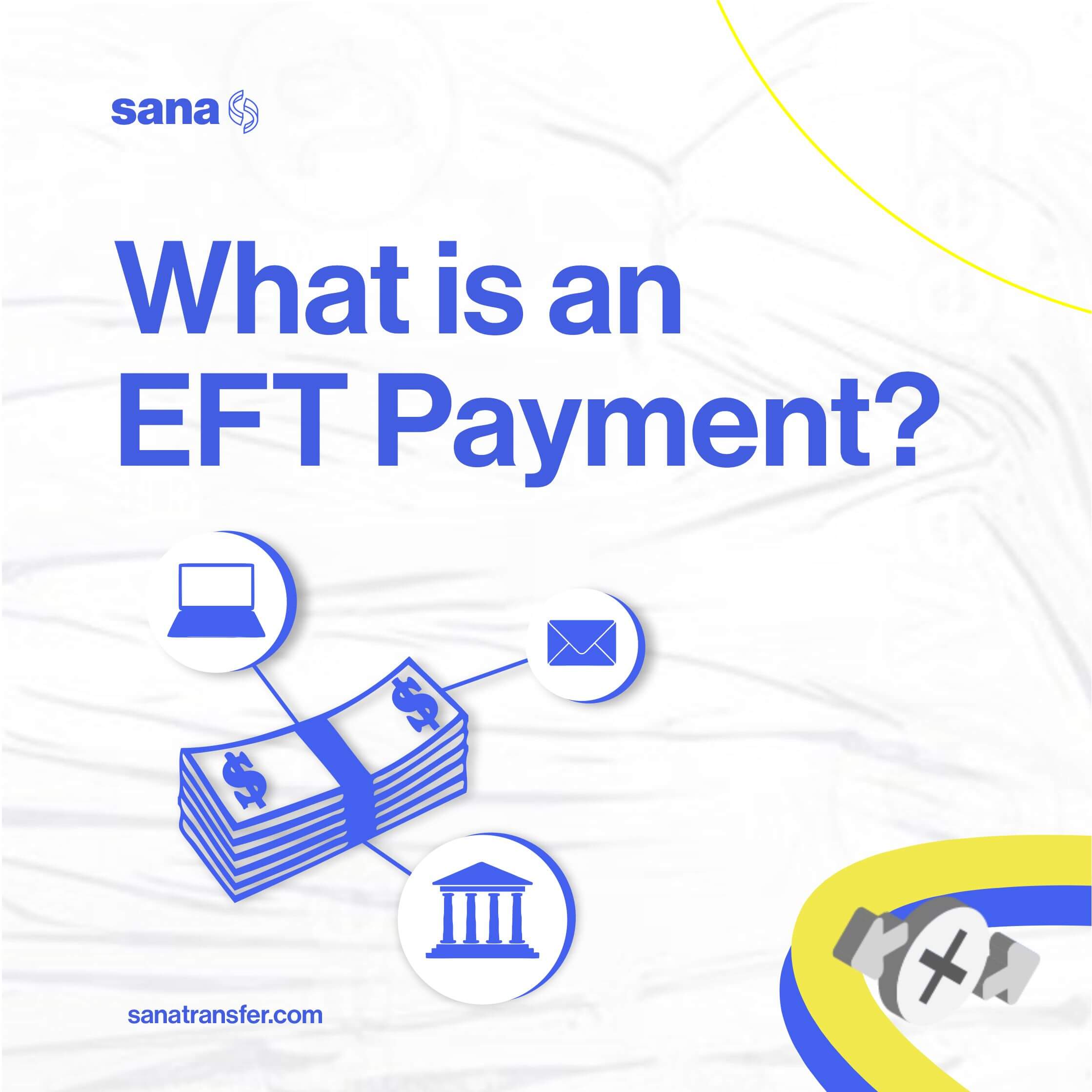What is an EFT Payment?
What is an EFT Payment? Here's a guide on everything you should know about EFT payments and how they work

Making transfers is now simpler and more convenient than ever, thanks to the digitization of transfers. In the past, transferring money involved a lot of paperwork and this made the process more difficult and less accurate. However, the inception of Electronic Funds Transfer (EFT) payments has made everything easy, convenient, accurate, and seamless. Now you may ask, what is an EFT payment? We’ve provided a guide on everything you should know about EFT payments and how they work.
An Overview - What is an EFT payment?
So, what’s EFT payment? An Electronic funds transfer (EFT), also known as a direct deposit, is the digital transmission of cash from one specific bank account to another bank account. Generally, these transfers occur independently from bank workers. This means that you don’t need to contact any bank staff to facilitate an EFT payment.
Also, since EFT is a digital transaction, you don’t need to fill out any paper documents. Nowadays, EFT is arguably the most common method of transferring money since it is an extremely simple, direct, and accessible method of payment. As business owners use EFT payments more often, paper checks become outdated due to their slower expedition, expense, and overall inconvenience.
What is the Electronic Fund Transfer Process?
The process involved with executing EFT transfers is straightforward. Generally, there are two partakers involved in the payment: the sender of money, and the receiver of money. When the sender of the funds initiates the transfer, the transaction will move through a sequence of solid digital networks. These networks originate from either a payment terminal or the internet and channel the transfer directly to the receiver’s bank. Senders are usually the initiators of the transfers while recipients are the receivers of the transfers. Most EFT payments are completed within a few days.
What Are the Types of EFT Payments?
There are numerous types of EFT payment methods. Each of these methods offers you ease and speedy delivery. For this reason, they have become very popular and the most used kind of payment method. Here is a list of the most popular types of EFT:
1. Electronic cheques
In this type of payment method, a digital cheque will be generated when the payer gets authorization. E-checks are popularly used to execute vendor payments.
2. Phone Payments
This is an informal transaction that is generally executed during a phone call. Usually, the sender will provide their information (card number) to the intended receiver over the phone. The transfer will then occur on the receiver’s lime. The sender will do very little once the transaction has been verbally authorized. This is a very common method for utility payments.
3. Direct Deposit
With the direct deposit method, money will be deposited into a bank account automatically and you wouldn’t have to fill out any paperwork. This transfer method is very popular among workers. Before you can use this method, you need to set up your deposit by providing the account information of your recipient and other necessary information. Once your deposit is set, you wouldn’t need to do any other work when initiating transactions.
4. ATM Transactions
ATM has become one of the most popular and convenient types of EFT payment methods. They usually occur at electronic kiosks that customers can find anywhere around their neighbourhood.
In the case of ATM transactions, the person can withdraw money from their account by putting their active debit card into a special machine, called the ATM. The ATM will transmit the information directly to the bank, then the request will be processed so the machine can dispense cash. This transaction is instant.
5. Internet Transactions
Internet transactions involve the manual entry of your card details into an empty point of sale field. Thereafter, you click the payment button. Essentially, doing this processes the approval for the payment of the transaction. The funds will be transferred either instantly or within a couple of days.
6. Card Transactions
The point of sale (POS) transaction generally involves the use of debit cards or credit cards as a form of payment. This method is fast becoming very popular and replacing cash. Specifically, this involves the swiping, dipping or entry of your debit or credit card details into the POS machines. During this transaction, your account information will be electronically received and the payment will be approved.
What’s the Difference Between an EFT and an ACH?
ACH is short for Automated Clearing House. ACH is simply a solid network of different financial institutions that intend to offer security during the transfer of money. During an ACH transaction, the transfer request will pass through the ACH before it gets to its destination (recipient’s bank). This means that ACH transfers are not completed immediately and will require an extra day or two more days. However, if speed is not so important to you you can use this method since it is very secure.
EFT is a broad term for all kinds of digital transactions. While the ACH is just a type of EFT. As stated above, we have numerous kinds of electronic transfers so that you can select your preference.
Are Electronic Fund Transfers (EFT) Safe?
Security is one of the important features of EFTs. Although there is always a risk when you transfer funds electronically/via the Internet, EFTs are still considered safer options than conventional paper cheques.
Some kinds of EFT, such as the ACH, are far more secure than other types. To guarantee that your EFTs are safe and secured, it is best to use platforms that you can trust like SanaTransfer.
SanaTransfer offers you an easy, convenient, and safe way to digitally send money across different countries globally.
What Are the Benefits of Electronic Fund Transfer (EFT)?
EFT has loads of advantages to offer when it comes to payments. All types of EFTs are very beneficial for business. Here is a list of some of their advantages:
1. EFTs are extremely fast and reliable payment methods. They don’t need so much work on both ends of the transaction.
2. Since Electronic Fund Transfers don't require too much work for both the sender and receiver, it is a very cost-effective solution and helps businesses to save money.
3. EFTs reduce the work of bank employees since they don’t have to get involved during the transaction because payments are electronically automated.
4. Making use of paper cheques needs cheque printing as well as postage, which are additional costs for the bank. The use of EFTs cuts costs for the bank.
5. Personal interactions are needed for processing paper cheques. This means that a bank will need to employ more workers to take care of this. With EFTs, the bank wouldn’t have to get additional employees, thereby reducing their costs.
6. There is always a risk involved when mailing cheques, as some of them can get missing or stolen. All of these issues are gone when you use an EFT.
7. When using cash to execute transfers, the bank requires an in-person transaction. Hence, the risk of errors during transactions increases. EFTs eliminate these risks.
EFT’s verified security is one of its most attractive features. Secure business payments establish a business as trustworthy to its customers. This results in repeat sales and solid long-term relationships.
How Do Electronic Funds Transfers Work for International Payments?
The same features that EFTs provide for local transfers are the same for international transfers. Essentially, international EFT payments function the exact way that local ones do. There are two parties involved: the sender and the receiver. The sender initiates the transaction while the receiver accepts the payment.
However, in the case of international payments, some countries maintain certain rules for high transfers. Also, note that you will be charged for exchange rates and foreign transaction transfer fees and this charge can vary depending on the platform you use. To get the competitive exchange rate and lowest International transfer fees, choose SanaTransfer.
Final Thoughts
Answering the question "What is an EFT payment", it refers to any type of payment executed electronically. It is a very safe, fast, and convenient payment method that is slowly replacing the use of traditional paper cheques. This method of funds transfer can be used to send both local and international payments.
For your International EFT transfers at the best rates, download the SanaTransfer mobile app now for Android or iOS.
